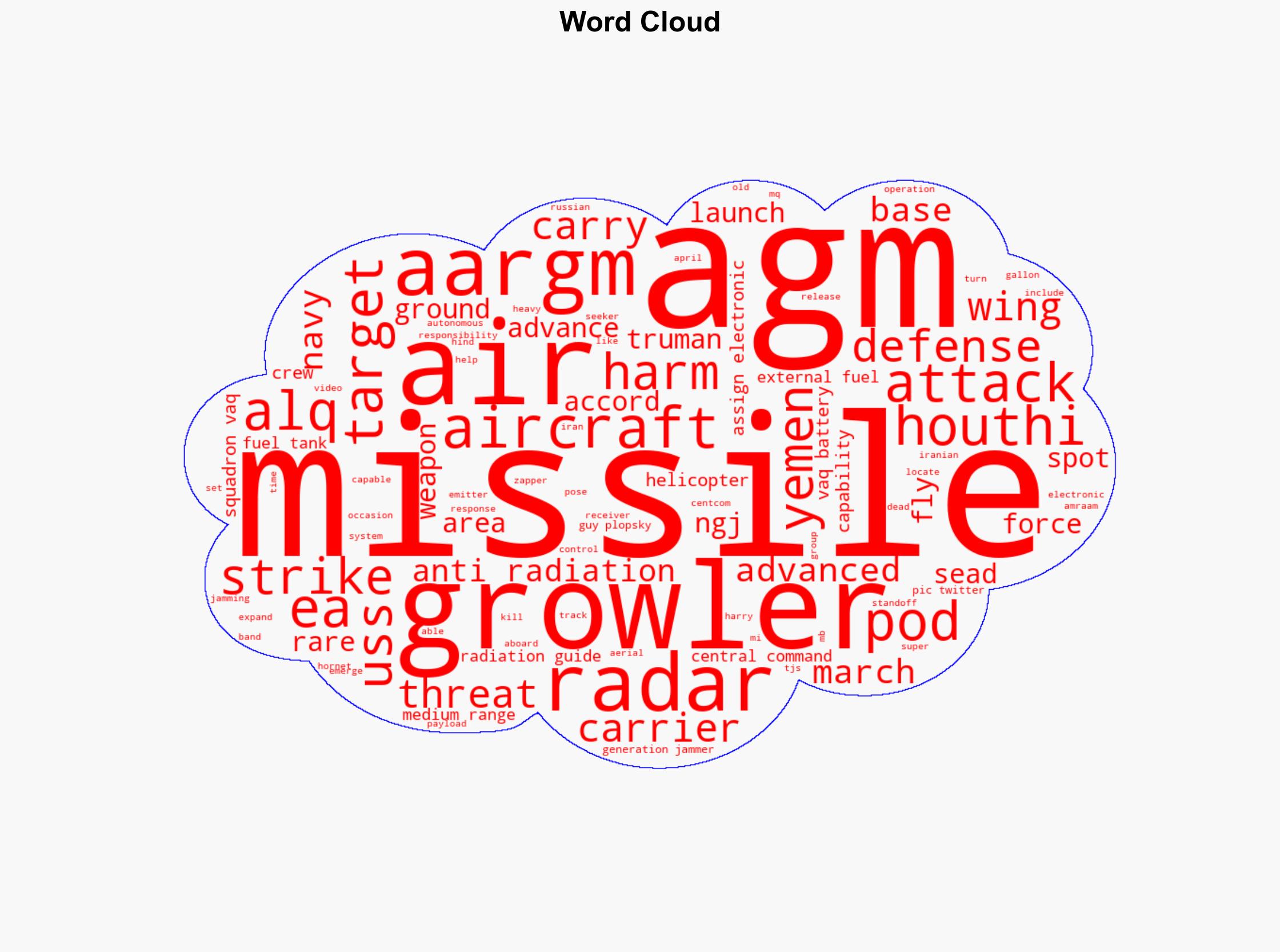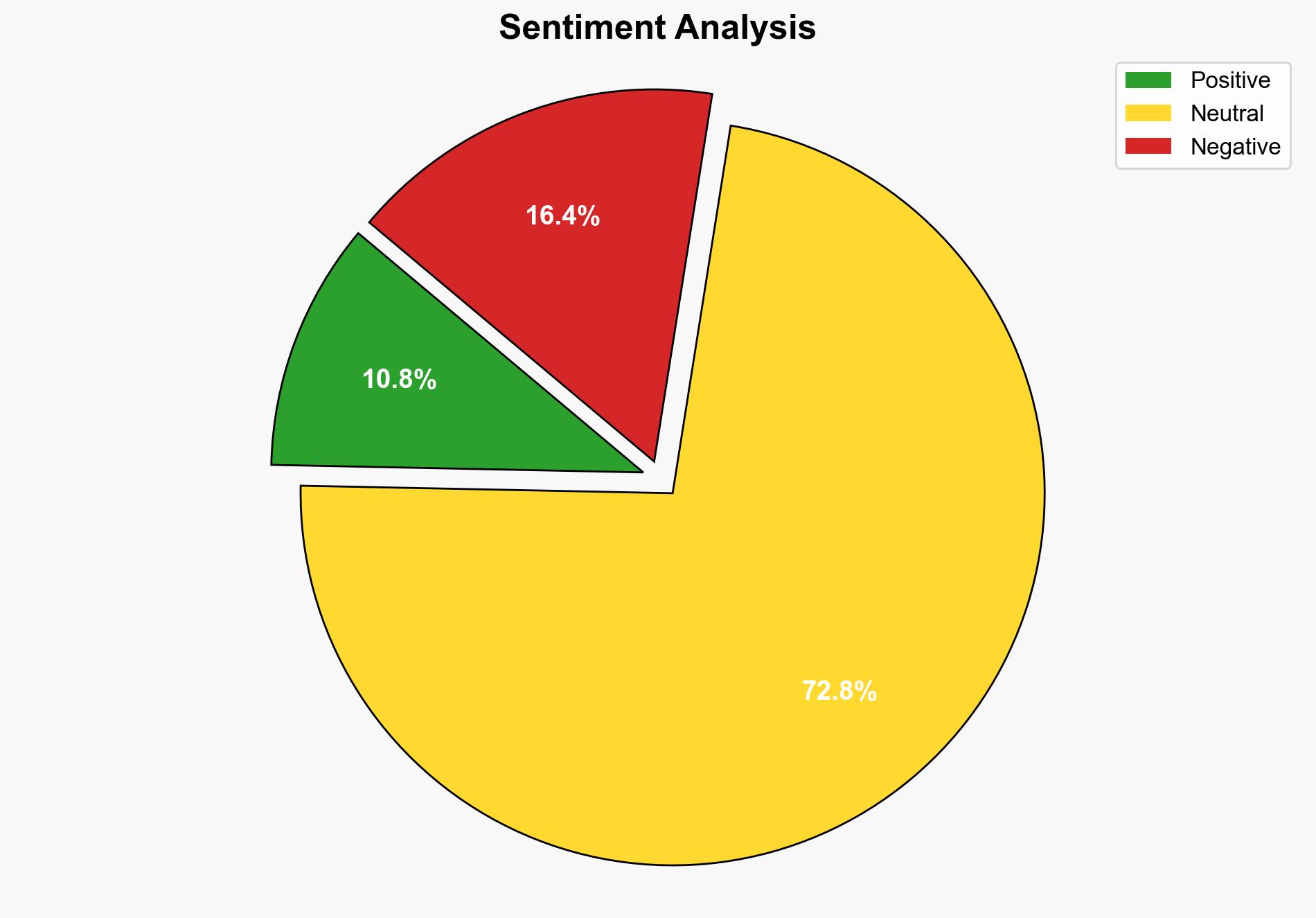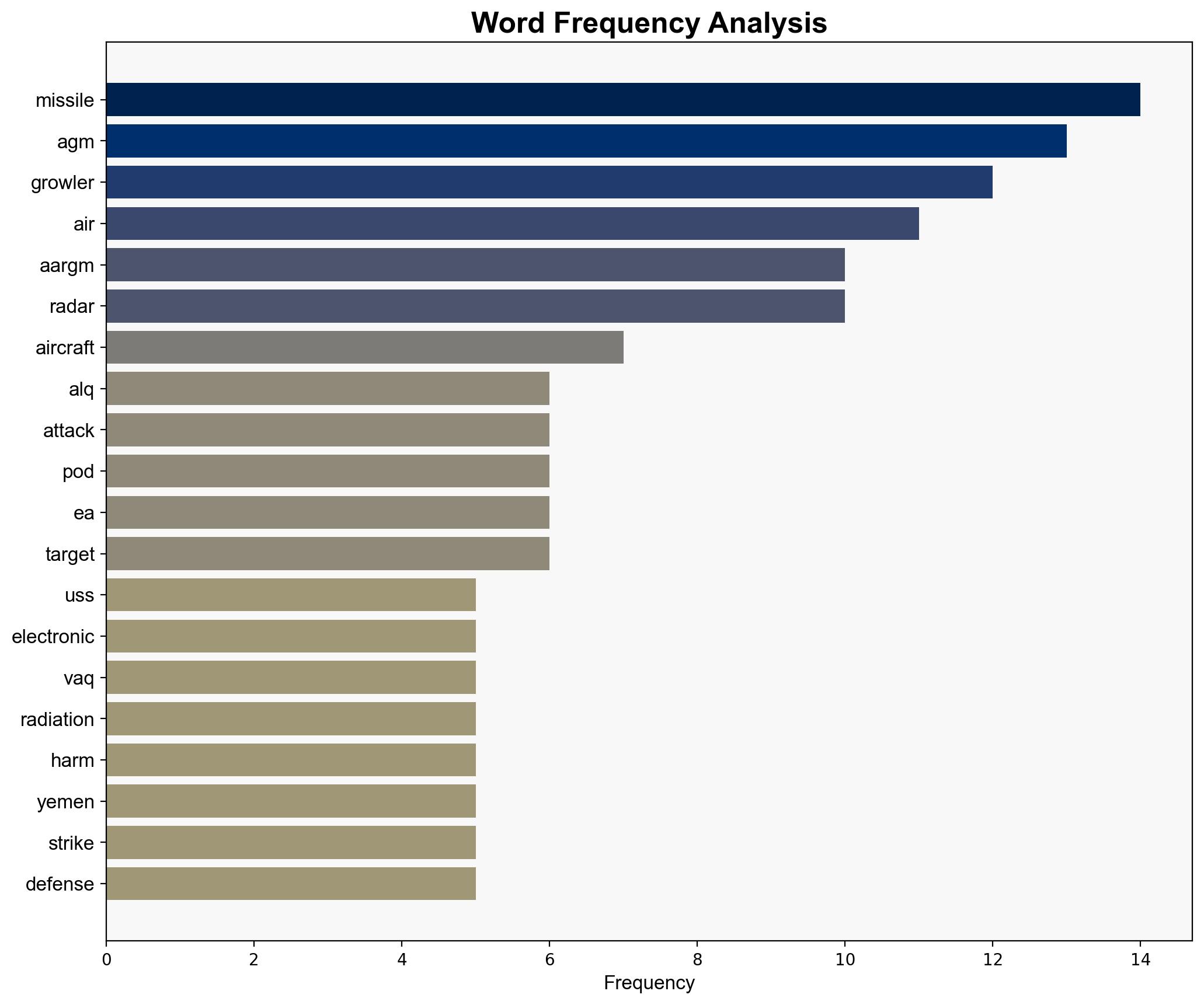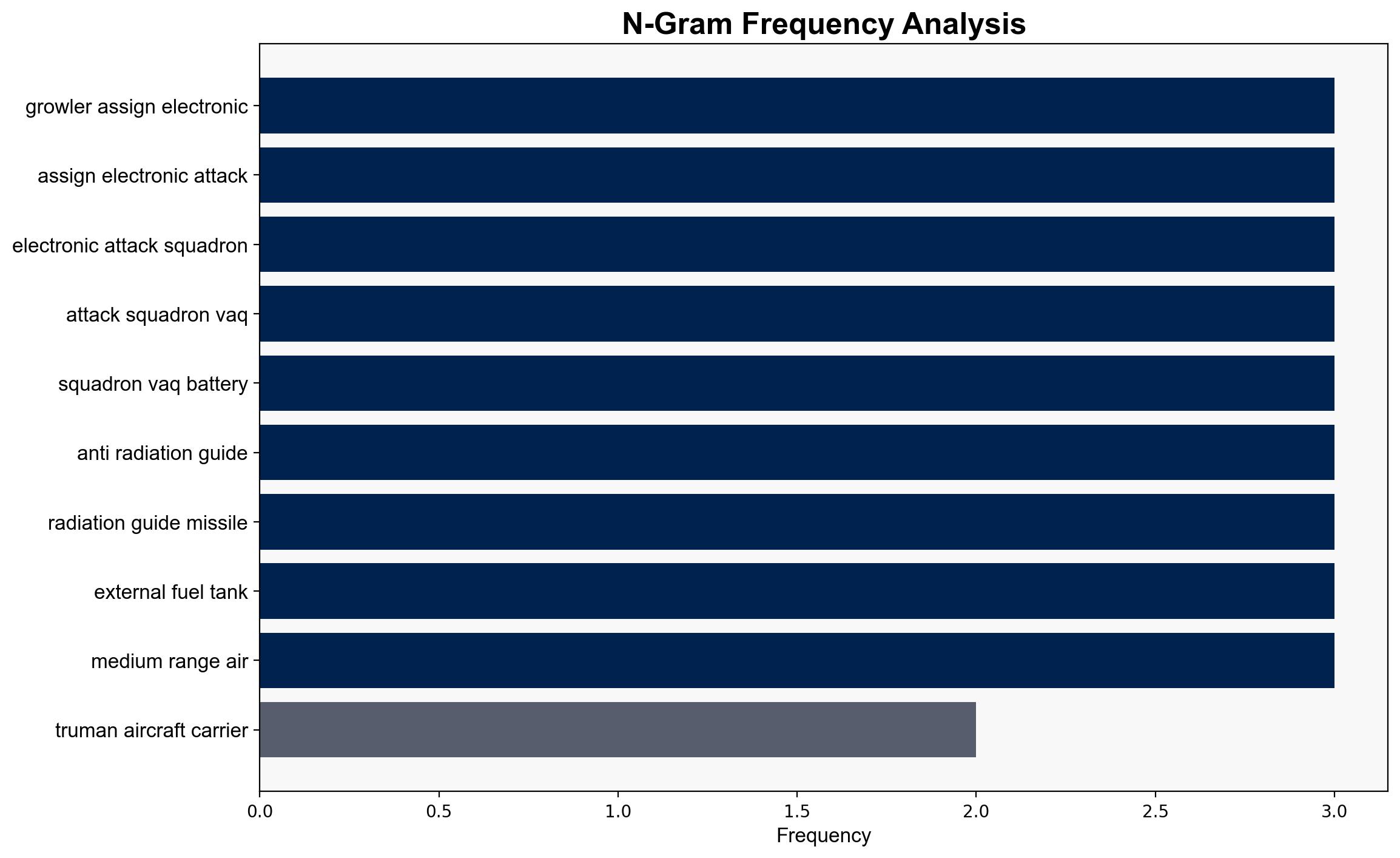US Navy EA-18G Growler Carries Rare Four AGM-88E AARGM Loadout Against Houthis – Theaviationist.com
Published on: 2025-04-22
Intelligence Report: US Navy EA-18G Growler Carries Rare Four AGM-88E AARGM Loadout Against Houthis – Theaviationist.com
1. BLUF (Bottom Line Up Front)
The deployment of the US Navy’s EA-18G Growler with a rare four AGM-88E AARGM loadout reflects a heightened response to the complex threat environment posed by Houthi forces in Yemen. This strategic move underscores the need for advanced electronic warfare capabilities to counter sophisticated radar and missile systems potentially supplied by external actors like Iran. It is recommended that ongoing monitoring and adaptive strategies be employed to address evolving threats in the region.
2. Detailed Analysis
The following structured analytic techniques have been applied to ensure methodological consistency:
SWOT Analysis
Strengths: The EA-18G Growler’s advanced electronic attack capabilities and its ability to carry multiple AGM-88E AARGMs enhance the US Navy’s operational flexibility and deterrence power in the region.
Weaknesses: The reliance on carrier-based operations may limit rapid deployment and sustainment in prolonged engagements.
Opportunities: Strengthening alliances with regional partners could enhance collective security measures against shared threats.
Threats: The potential for increased Iranian support to Houthi forces could escalate regional tensions and complicate US operations.
Cross-Impact Matrix
The interplay between regional conflicts, such as the ongoing Yemen crisis, and external influences, like Iranian support, creates a dynamic threat landscape. The introduction of advanced missile systems by Houthis could trigger a regional arms race, affecting stability in neighboring areas.
Scenario Generation
Scenario 1: Increased US military presence deters further Houthi aggression, stabilizing the region.
Scenario 2: Escalation of hostilities leads to broader regional conflict, drawing in additional international actors.
Scenario 3: Diplomatic efforts succeed in de-escalating tensions, leading to a negotiated settlement in Yemen.
3. Implications and Strategic Risks
The deployment of advanced electronic warfare capabilities highlights the growing sophistication of threats in the region. The potential for Houthi forces to acquire and deploy advanced missile systems poses significant risks to regional stability and international shipping lanes. Cross-domain risks include cyber threats and the proliferation of unmanned aerial systems.
4. Recommendations and Outlook
- Enhance intelligence-sharing and joint operations with regional allies to counter shared threats effectively.
- Invest in adaptive electronic warfare systems to maintain a technological edge over adversaries.
- Scenario-based projections:
- Best Case: Strengthened alliances and successful deterrence lead to regional stability.
- Worst Case: Escalation into a broader conflict involving multiple state actors.
- Most Likely: Continued low-intensity conflict with periodic escalations.
5. Key Individuals and Entities
Guy Plopsky (mentioned in the source text).
6. Thematic Tags
(‘national security threats, cybersecurity, counter-terrorism, regional focus’, ‘cybersecurity’, ‘counter-terrorism’, ‘regional focus’)





